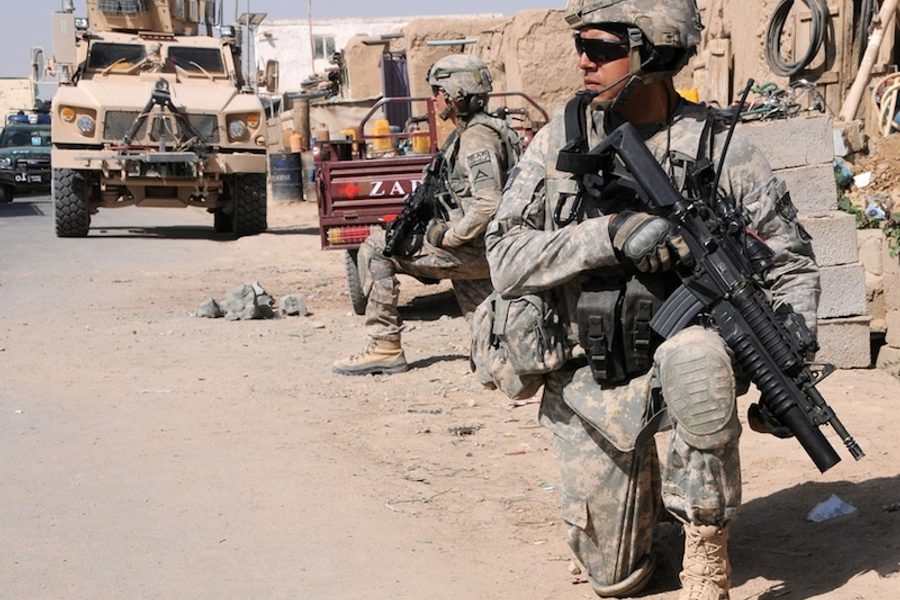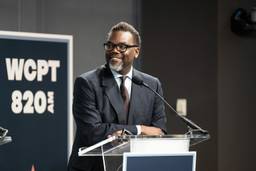
Towards the end of September, after declaring war on ISIS, President Obama gave an interview to “60 Minutes” in which he tried to explain the rules of U.S. engagement: “When trouble comes up anywhere in the world, they don’t call Beijing, they don’t call Moscow. They call us. … That’s always the case. America leads. We are the indispensable nation.”
This also holds for environmental and humanitarian disasters: “When there’s a typhoon in the Philippines, take a look at who’s helping the Philippines deal with that situation. When there’s an earthquake in Haiti, take a look at who’s leading the charge and making sure Haiti can rebuild. That’s how we roll. And that’s what makes this America.”
In October, however, Obama himself made a call to Tehran, sending a secret letter to Ayatollah Ali Khamenei in which he suggested a broader rapprochement between the U.S. and Iran based on their shared interest in combating Islamic State militants.
When the news of the letter reached the public, U.S. Republicans denounced it as a gesture of weakness that can only strengthen Iran’s arrogant view of the U.S. as a superpower in decline. That’s how the United States rolls: Acting alone in a multi-centric world, they increasingly gain wars and lose the peace, doing the dirty work for others — for China and Russia, who have their own problems with Islamists, and even for Iran — the final result of the U.S. invasion of Iraq was to deliver the country to the political control of Iran. (The U.S. got caught in just such a situation in Afghanistan when their help to the fighters against the Soviet occupations gave birth to the Taliban.)
The ultimate source of these problems is the changed role of the U.S. in global economy. An economic cycle is coming to an end, a cycle that began in the early 1970s with the birth of what Yanis Varoufakis calls the “global minotaur,” the monstrous engine that ran the world economy from the early 1980s to 2008. The late 1960s and the early 1970s were not just the times of oil crisis and stagflation; Nixon’s decision to abandon the gold standard for the U.S. dollar was the sign of a much more radical shift in the basic functioning of the capitalist system. By the end of the 1960s, the U.S. economy was no longer able to continue the recycling of its surpluses to Europe and Asia: Those surpluses had turned into deficits. In 1971, the U.S. government responded to this decline with an audacious strategic move: Instead of tackling the nation’s burgeoning deficits, it decided to do the opposite, to boost deficits. And who would pay for them? The rest of the world! How?
By means of a permanent transfer of capital that rushed ceaselessly across the two great oceans to finance America’s deficits: The United States has to suck up a half-billion dollars daily to pay for its consumption and is, as such, the universal Keynesian consumer who keeps the global economy running. This influx relies on a complex economic mechanism: The United States is “trusted” as the safe and stable center, so that all others, from the oil-producing Arab countries to Western Europe to Japan, and now even China, invest their surplus profits in the United States. Since this “trust” is primarily ideological and military, not economic, the problem for the United States is how to justify its imperial role — it needs a permanent state of war, offering itself as the universal protector of all other “normal” — as opposed to “rogue” — states.
However, even before it fully established itself, this world system based on the primacy of the U.S. dollar as the universal currency is breaking down and is being replaced by … what? This is what the ongoing tensions are about. The “American century” is over and we are witnessing the gradual formation of multiple centers of global capitalism: the United States, Europe, China, maybe Latin America, each of them standing for capitalism with a specific twist: the United States for neoliberal capitalism; Europe for what remains of the welfare state; China for authoritarian capitalism; Latin America for populist capitalism. The old and new superpowers are testing each other, trying to impose their own version of global rules, experimenting with them through proxies, which, of course, are other small nations and states.
The present situation thus bears an uncanny resemblance to the situation around 1900 when the hegemony of the British empire was questioned by new rising powers, especially Germany, which wanted its piece of the colonial cake. The Balkans were one of the sites of their confrontation. Today, the role of the British empire is played by the United States. The new rising superpowers are Russia and China, and the Balkans are the Middle East. It is the same old battle for geopolitical influence. The United States is not alone in its imperial stirrings; Moscow also hears calls from Georgia, from Ukraine; maybe it will start hearing voices from the Baltic states …
There is another unexpected parallel with the situation before the outbreak of World War I: In the last months, media continuously warn us about the threat of the World War III. Headlines like “The Russian Air Force’s Super Weapon: Beware the PAK-FA Stealth Fighter” or “Russia Is Ready for Shooting War, Will Likely Win Looming Nuclear Showdown with U.S.” abound. At least once a week, Putin makes a statement seen as a provocation to the West, and a notable Western statesman or NATO figure warns against Russian imperialist ambitions. Russia expresses concerns about being contained by NATO, while Russia’s neighbors fear Russian invasion. And on it goes. The very worried tone of these warnings seems to heighten the tension — exactly as in the decades before 1914. And in both cases, the same superstitious mechanism is at work, as if talking about it will prevent it from happening. We know about the danger, but we don’t believe it can really happen — and that’s why it can happen. That is to say, even if we don’t really believe it can happen, we are all getting ready for it — and these actual preparations, largely ignored by the big media, are mostly reported in marginal media. From the Centre for Research on Globalization’s blog:
America is on a war footing. While a World War Three Scenario has been on the drawing board of the Pentagon for more than 10 years, military action against Russia is now contemplated at an ‘operational level.’ We are not dealing with a ‘Cold War.’ None of the safeguards of the Cold War era prevail. The adoption of a major piece of legislation by the U.S. House of Representatives on Dec. 4, 2014 (H.R. 758) would provide (pending a vote in the Senate) a de facto green light to the U.S. president and commander in chief to initiate — without congressional approval — a process of military confrontation with Russia. Global security is at stake. This historic vote — which potentially could affect the lives of hundreds of millions of people worldwide — has received virtually no media coverage. A total media blackout prevails. On December 3, the Ministry of Defence of the Russian Federation announced the inauguration of a new military-political entity which would take over in the case of war. Russia is launching a new national defense facility, which is meant to monitor threats to national security in peacetime, but would take control of the entire country in case of war.
To further complicate matters, the competing new and old superpowers are joined by a third factor: the radicalized fundamentalist movements in the Third World, which oppose all of the superpowers but are prone to make strategic pacts with some of them. No wonder our predicament is getting more and more obscure. Who is who in the ongoing conflicts? How to choose between Assad and ISIS in Syria? Between ISIS and Iran? Such obscurity — not to mention the rise of drones and other arms that promise a clean, high-tech war without casualties (on our side) — gives a boost to military spending and makes the prospect of war more appealing.
If the basic underlying axiom of the Cold War was the axiom of MAD (Mutually Assured Destruction), the axiom of today’s War on Terror seems to be the opposite one, that of NUTS (Nuclear Utilization Target Selection), i.e., the idea that, by means of a surgical strike, you can destroy the enemy’s nuclear capacities, while your anti-missile shield protects you from a counter-strike. More precisely, the United States acts as if it continues to trust the MAD logic in its relations with Russia and China, while it is tempted to practice NUTS with Iran and North Korea. The paradoxical mechanism of MAD inverts the logic of the “self-fulfilling prophecy” into the “self-stultifying intention”: The very fact that each side can be sure that, in the case it decides to launch a nuclear attack on the other side, the other side will respond with full destructive force, guarantees that no side will start a war. The logic of NUTS is, on the contrary, that the enemy can be forced to disarm if it is assured that we can strike at him without risking a counter-attack. The very fact that two directly contradictory strategies are mobilized simultaneously by the same superpower bears witness to the phantasmagoric character of this entire reasoning.
How to stop our slide into this vortex? The first step is to leave behind all the pseudo-rational talk about “strategic risks” that we are required to assume. We must also jettison the notion of historical time as a linear process of evolution in which, at each moment, we have to choose between different courses of action. It is not just a question of avoiding risks and making the right choices within the global situation, the true threat resides in the situation in its entirety, in our “fate” — if we continue to “roll” the way we do now, we are doomed, no matter how carefully we proceed. We have to accept the threat as our fate. So the solution is not to be very careful and avoid risky acts — in acting like this, we fully participate in the logic which leads to catastrophe. The solution is to fully become aware of the explosive set of interconnections that makes the entire situation dangerous. Once we do this, we should embark on the long and difficult work of changing the coordinates of the entire situation. Nothing less will do.
In a weird precursor to President Obama’s “that’s how we roll,” when the passengers of the United Airlines Flight 93 attacked the hijackers on 9/11, the last audible words of Todd Beamer, one of them, were: “Are you guys ready? Let’s roll.” That’s how we all roll, so let’s roll, we may say — and bring down not only a plane, but our entire planet.








